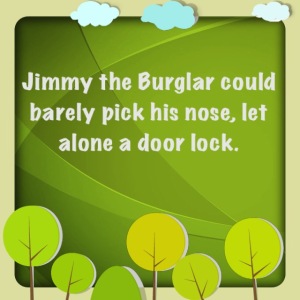I received a good response to last month’s apocalyptic post on pulp, mostly notes of reminiscences. I had no idea people time-stamped their best reads like they were best dates. Two folks thought enough to put fingers to keyboard and tell me just how wrong I was, and one good friend about chewed my ear off with the same message. But one woman wrote about following a person off a subway, up a flight of stairs and all the way to the crosswalk without that person ever looking up from their Kindle. She didn’t say if they were male or female, old or young, but earlier she had seen the same thing play out from subway to crosswalk, only this person was reading a paperback. What she noticed was how engrossed both readers were in their stories, not the format they were reading them on. To her, and to me, it proves that Content will always be King.
Thanks to all who commented.
Tomorrow’s bestselling fiction authors need to wade through new and exciting waters if they want readers to enjoy their digital content. The future fiction story has to be engaging on every page. Good news! Authors can now use more than just words to engage their readers!
Meaningful graphics strategically placed in the body of the works is soon to be the new norm. Children’s fiction has always been picture book format, so it will just be business as usual for that age group. Adult fiction authors, however, strive to paint just enough of a character or a scene, yet still leave something for the reader’s own imagination. We want to draw characters that remind readers of someone they’ve known: the bitchy boss, the nearsighted neighbor, the real estate lady who knows no quit.
Authors run great risks in the future if they use the wrong graphics. This becomes a fault, graphically speaking, when authors use a well-known person as a metaphor. For example, one of my references to Elizabeth, a main character in my upcoming novel, Knock Softly (working title), says she looks like Little Orphan Annie in one childhood photograph. The reader already knows that Elizabeth is a redhead so that is all I say. I leave all her other attributes to the reader’s imagination; young Elizabeth’s height, voice, dimples or not. Adult fiction readers can color in all the “known” minutiae much faster, and clearer, than the author can. In this case, any companion image of a young Elizabeth would spoil the reader’s own imagination.
Other trip-ups include using well known locations, like Disneyland or the Grand Canyon for example. You don’t want to alter whatever image your reader already has; you want them to recall it. Authors can only do that with words that metaphorically develop their characters against such landmarks. The great e-novel of the future will illuminate the text with images that only the author can bring to life.
Color, not black and white, will adorn future e-pages. Without ink, there is no cost consideration for digitally printing in color, so descriptive hues, shades and shadows will matter as never before. For that reason, future authors need to be just as considerate for what they choose to leave out as what they choose to spell out. Even the very colors that illustrators use have to complement the scene’s mood and drama, otherwise the visuals will wind up competing with the words. It’s a subliminal thing, but ad agencies have been refining the use of color for decades to convey stature, sensuality and attitude. This is nothing new, it’s just found a new home. Black and white will only be used to depict dark and dreary scenes, or to shadow horror too repulsive for vivid interpretation.
Here’s the rub: e-novel readers cannot see how “heavy” a tome is before they buy it. There is no page count. Robert Frost’s The Road Not Taken weighs as much as James Joyce’s Ulysses in e-book format. Instead, there is an indicator at the bottom of each page showing what percentage you’ve completed. It feels like a journey, not a read. Authors need to be aware of this from their first draft onwards. That indicator is like the kids in the backseat of your mind asking, Are we there yet? There is less time for a story to “breathe” in the future e-novel, where pictures purpose the pauses. Each page has to be reason enough for the reader to carry on. Authors are going to have to make the journey just as entertaining as the destination if they want to shut up the brats in the backseat of their reader’s mind. The percentage indicator is neither good nor bad; it’s just a new way of telling time in a novel. We’ll all get used to it. By next Thursday.
E-novels will probably be 75,000 to 100,000 words with a dozen-odd illustrations to richen up the read. Last chapters will be written like soap opera; effectively, lead-ins for tomorrow’s adventure in a continuing series. Authors who create quirky characters that readers want to follow from adventure to adventure will do well.
